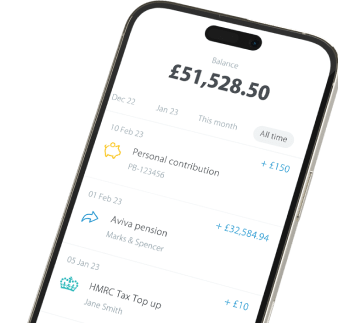
This article was last updated on 12/02/2024
The COVID-19 pandemic changed working and personal lives for many of us, including the self-employed who might now be thinking differently about their financial security and long-term goals compared to before.
Post-COVID, people are increasingly looking for ways of working that complement, rather than compete with, their lifestyle outside of employment.
Examples of this include:
- The ‘Great Resignation’, which has seen employees choose not to return to the positions they held before the pandemic, instead pursuing new paths, including self-employment.
- The ‘quiet quitting‘ movement, where employees adopt a ‘work to rule’ practice instead of working overtime, unpaid.
- An increase in people looking to work from anywhere in the world, and become digital nomads, as working from the office, or indeed from home, becomes a thing of the past.
For many that are self-employed, their personal life and business can often be tightly intertwined, and shouldering all the responsibility to generate an income can leave little time to enjoy pursuits outside work, or plan for the future. If this sounds all too familiar, read on to discover some key long-term considerations that shouldn’t be overlooked.
1. Impact of delaying retirement savings
Inconsistent and variable income can cause many self-employed people to delay setting up and paying into a pension – without realising how much this can cost at retirement, stealing away dreams of retiring comfortably or early.
The difference of waiting just a few years can be huge, and the effect is bigger the longer you wait to start contributing to a pension.
This can mean having to work much longer than you wanted, or intended to, before retiring. Or, having your lifestyle curtailed later in your working life as you increase pension contributions to make up for lost time, in order to still achieve the lifestyle you desire in retirement.
Unbiased, has created a calculator to show the impact of delaying contributing to your pension. For example, starting saving at 30, with a retirement age of 65, investing £100 a month gives a potential future value of savings of £141,745.
Delay this by just five years and this falls to £100,562, a drop of £41,183. Wait 10 years and the difference is even more stark – falling to £69,787, making your retirement pot smaller by £71,958.
The cost of delaying retirement saving by 15 years is truly colossal. The £100 a month from age 45 will, by retirement, leave you with just £46,791, a huge £94,954 less compared to starting pension saving at age 30. But, starting late is still much better than not starting at all.
2. Consider how much you need to retire
Self-employed people are typically not paying into a pension. According to government data, only 16% of self-employed people are paying into a pension compared to 88% of those eligible for Auto-Enrolment through their employer.
Though still a tax efficient way of saving, there may be less of an obvious incentive for self-employed people to pay into pensions because they don’t receive employer contributions. And without nudging from an employer, those that are self-employed may not be as aware of how much they really need to retire.
Figures based on research by the Pensions and Lifetime Savings Association (PLSA) outline that the minimum needed for a single person is:
- £13,400 a year for a basic retirement with a few luxuries
- £31,700 a year for a moderate retirement with a few more luxuries
- £43,900 a year for a luxury retirement filled with holidays
The earlier you wish to retire, the bigger the initial pension pot you’ll need in order to stretch that over the 10, 20, or even 30 years of paying for your lifestyle post-work. For example, a £200,000 pension pot may sound a lot but in reality it’ll only provide just over 18 years at a basic level of retirement income, and less than 10 years of a retirement of moderate luxury.
Knowing roughly how much you’ll need in retirement is the crucial first step, following that, keeping your self-employed pension on track is just as important.
3. Think about retiring later
Whether you started saving into a pension later in life and could benefit from more time for the money to grow or, you’ve seen your existing pots decrease in value due to cost of living crisis and other factors, delaying retirement for a few years might mean you’re financially better off in the long-term.
Delaying your retirement‘s a difficult decision to make and continuing to work as you get older may seem daunting, and perhaps disappointing, as you’ve worked and saved hard for many years.
If you’re unsure whether you need to retire later than planned and are a PensionBee customer, you can log in to your account and use our retirement planner to help estimate how long your current savings pot might last you.
While you may want to delay retirement for financial benefit, it might not be possible for you to continue working. The important thing to remember is that you’ve got options, whether that’s delaying claiming your State Pension, choosing to alter your personal pension contributions or opting to draw down your pension.
Key takeaways
- Self-employed people may never think it’s the ‘right time’ to start pension saving, but delays may significantly reduce their final pot size.
- Curious how much you need a year in retirement? See the PLSA’s income standards.
- Think about your options - retiring later or delaying claiming State Pension could help ensure you’re financially better off in the future.
Laura Miller is a freelance financial journalist.
Risk warning
As always with investments, your capital is at risk. The value of your investment can go down as well as up, and you may get back less than you invest. This information should not be regarded as financial advice.






